In early January 2025, the default sharing settings in SharePoint, OneDrive, and Microsoft Teams were updated. Now when you share a file or folder, you will be prompted to add specific people.
The previous default – “People in University of Vermont” – was convenient but resulted in some content being shared more widely than intended. As Microsoft improves the availability and discoverability of UVM data, adjusting this default is important in ensuring content is shared only with intended recipients.
Sharing Files and Folders with the New Default
In this guide, we’re sharing a file using onedrive.com. However, the same sharing interface appears in SharePoint, OneDrive, and Teams.
- Select the file or folder you want to share and click on the Share button.
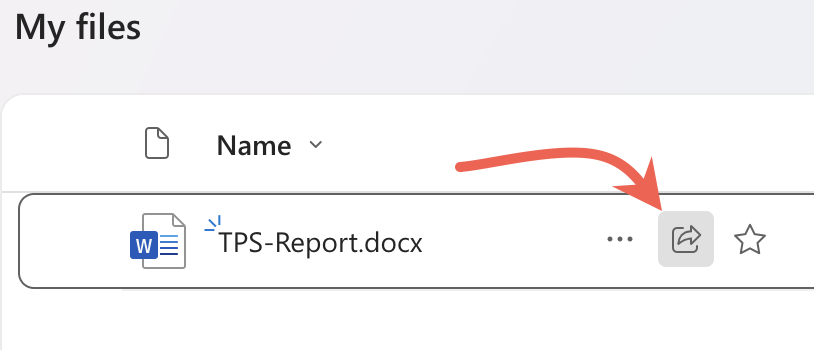
- Enter the name, group, or email addresses you want to share to.
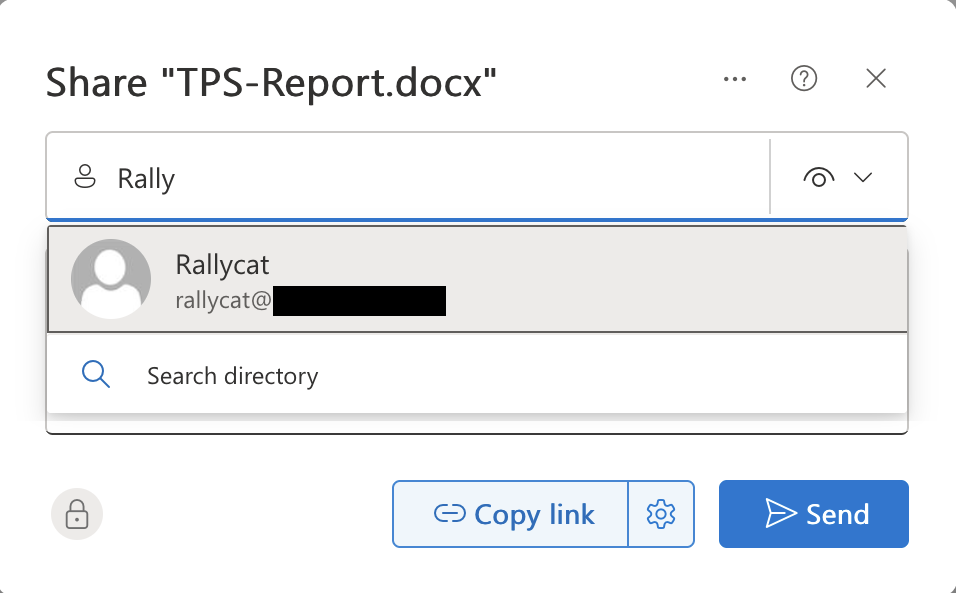
- Optionally, click the eye icon and adjust the type of access to be granted.
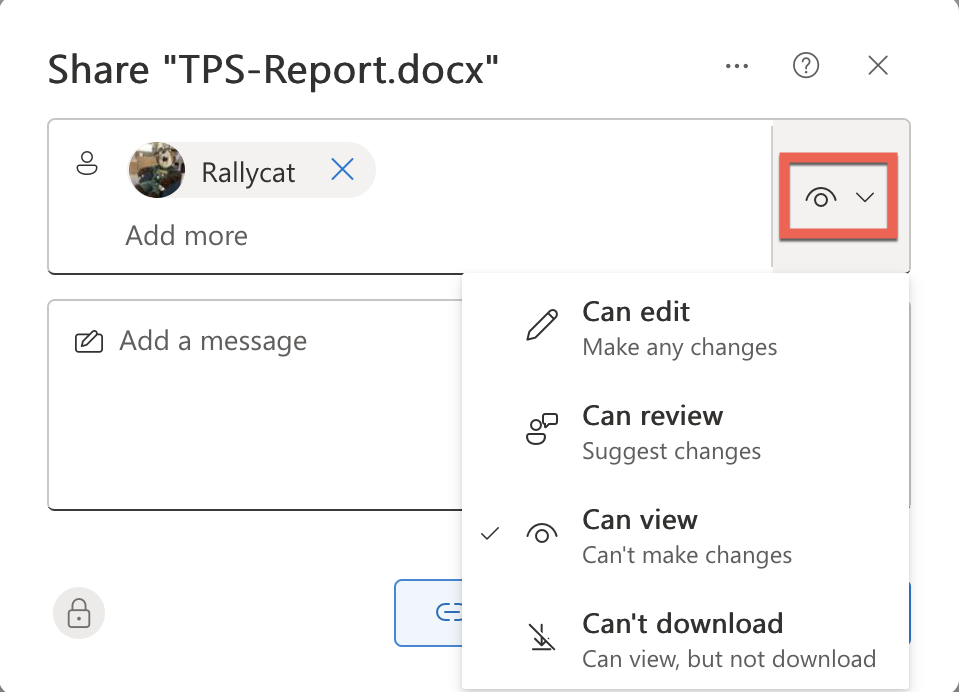
- Click Send.
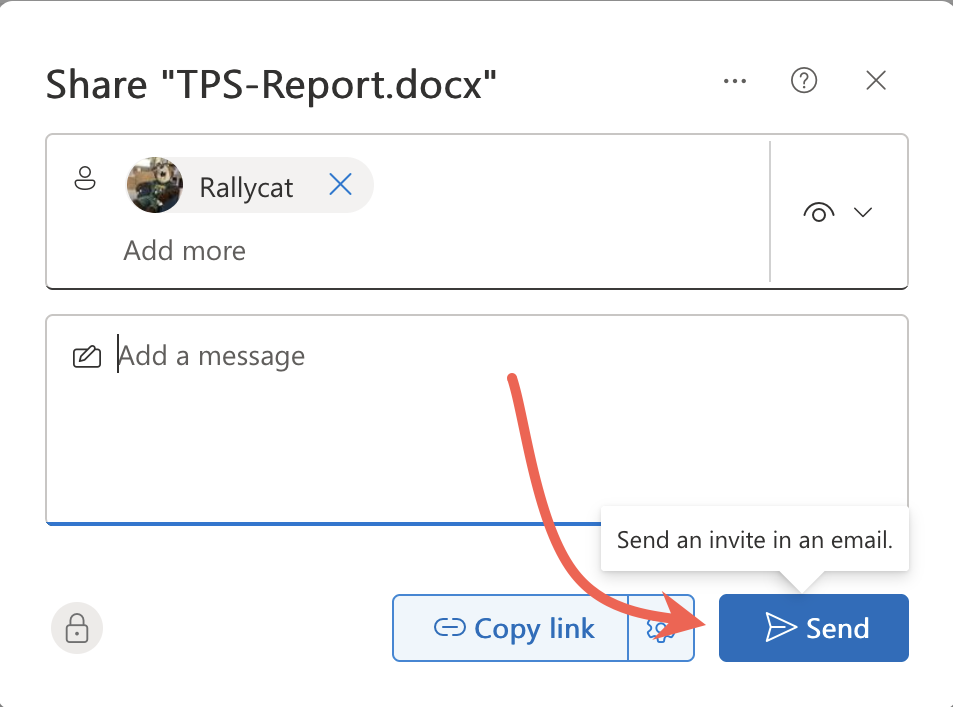
If you wish to share the file with everyone at UVM, click on the gear button and select “People in University of Vermont.” For additional instructions, please see Microsoft’s documentation on sharing SharePoint files or folders.
If you try to share a file without following the instructions above for adding people or otherwise customizing sharing options, you’ll see an error saying Add people to share the link. 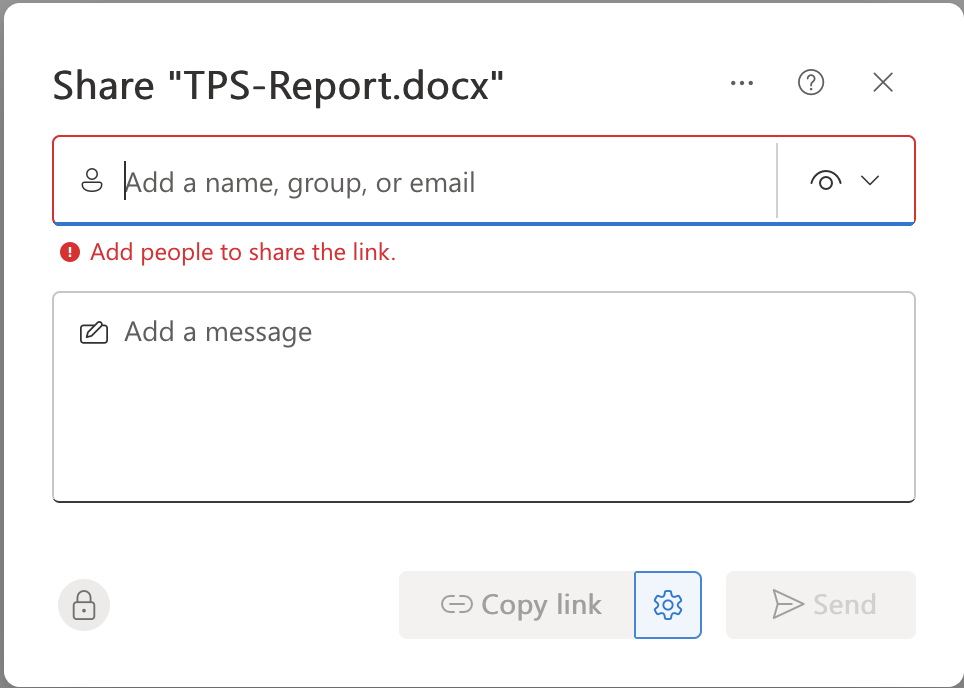
To share the file with everyone at UVM, click on the gear button and select “People in University of Vermont.” See Microsoft’s documentation on sharing SharePoint files or folders.